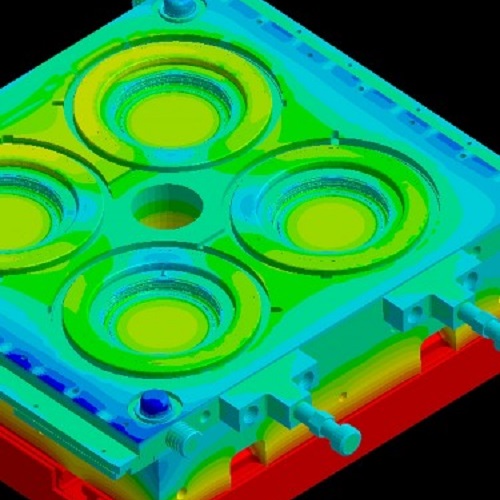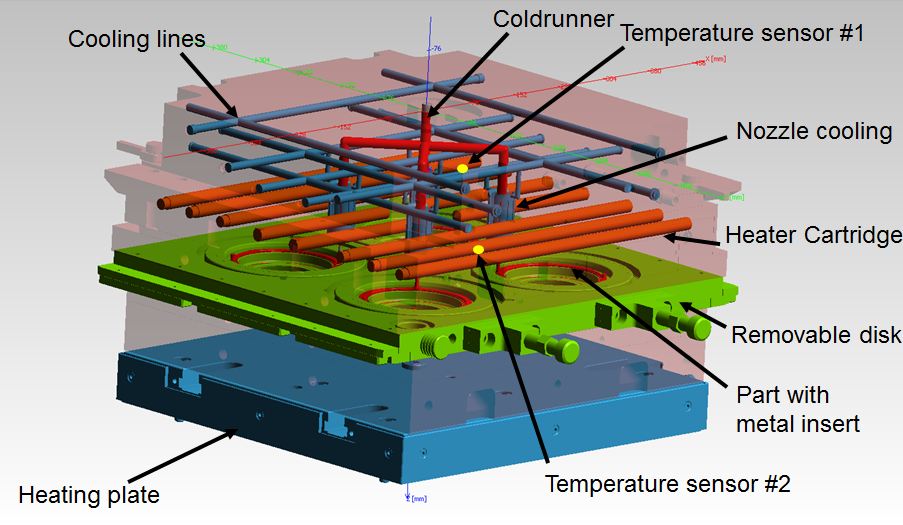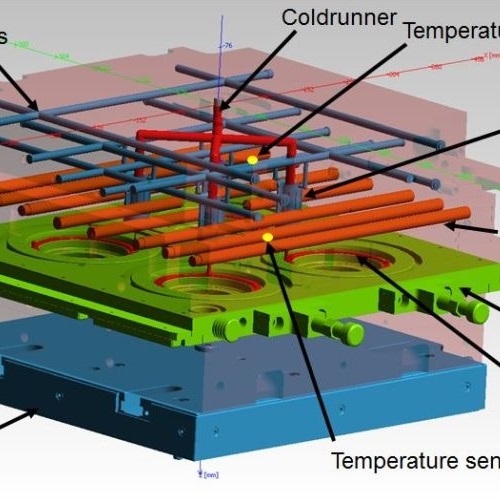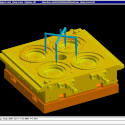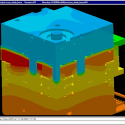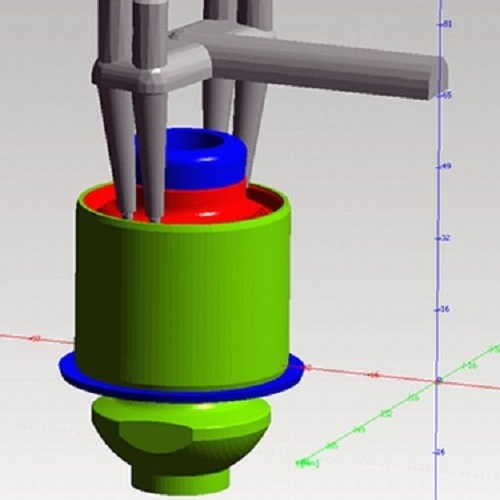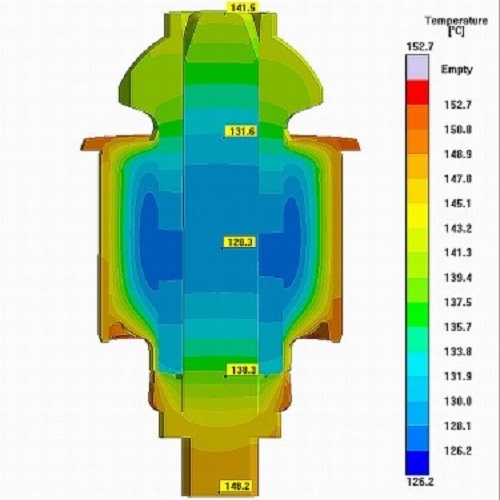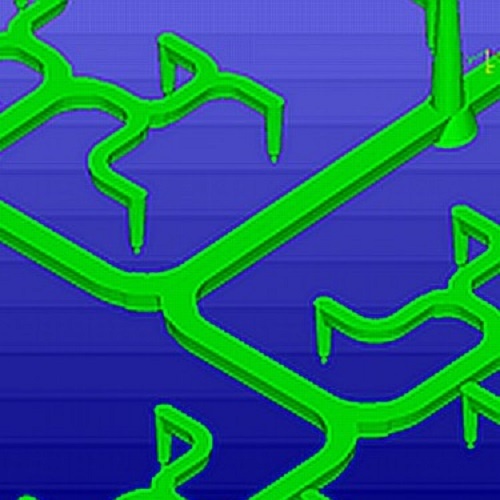The decision of how to design the mold for a rubber part is normally based on experience, but usually once the mold is built, several iterations are needed before it delivers parts with acceptable quality. This expensive approach is however nowadays no longer necessary.
SIGMASOFT® Virtual Molding reproduces the complete molding process over several cycles, and it is able to reproduce up to the last detail the mold, part, runner system, tempering system and inserts used. It also reproduces the complex interactions between material and mold while the heat transfer process takes place, and both the curing and the viscosity of the elastomer melt are affected.
As a result, the process problems that make the iterations necessary can be identified virtually and corrected upfront. It is possible to get first-shot success in the production of rubber parts.
The temperature in the virtual mold can be controlled in precisely the same way as in the real mold. There are options to reproduce the dry cycle, to model heating cartridges, cold runner cooling and PI control systems.
In Figure 1 an example of a rubber mold is presented. This is the model that is introduced into SIGMASOFT® Virtual Molding. The complete mold information is included – just in the same way that it is specified for manufacturing. In this case, the four cavity mold produces elastomer parts (depicted in red) to be over-molded over a metallic insert ring.
The animation shows how the temperature distribution in the mold changes over several cycles. The cavity temperature is reduced in each cycle, as the cold melt flows into the mold, and is increased as the melt reaches the curing temperature. The insert in this case, with its material properties, determines a specific heat transfer regime that influences the curing degree in the final part.
